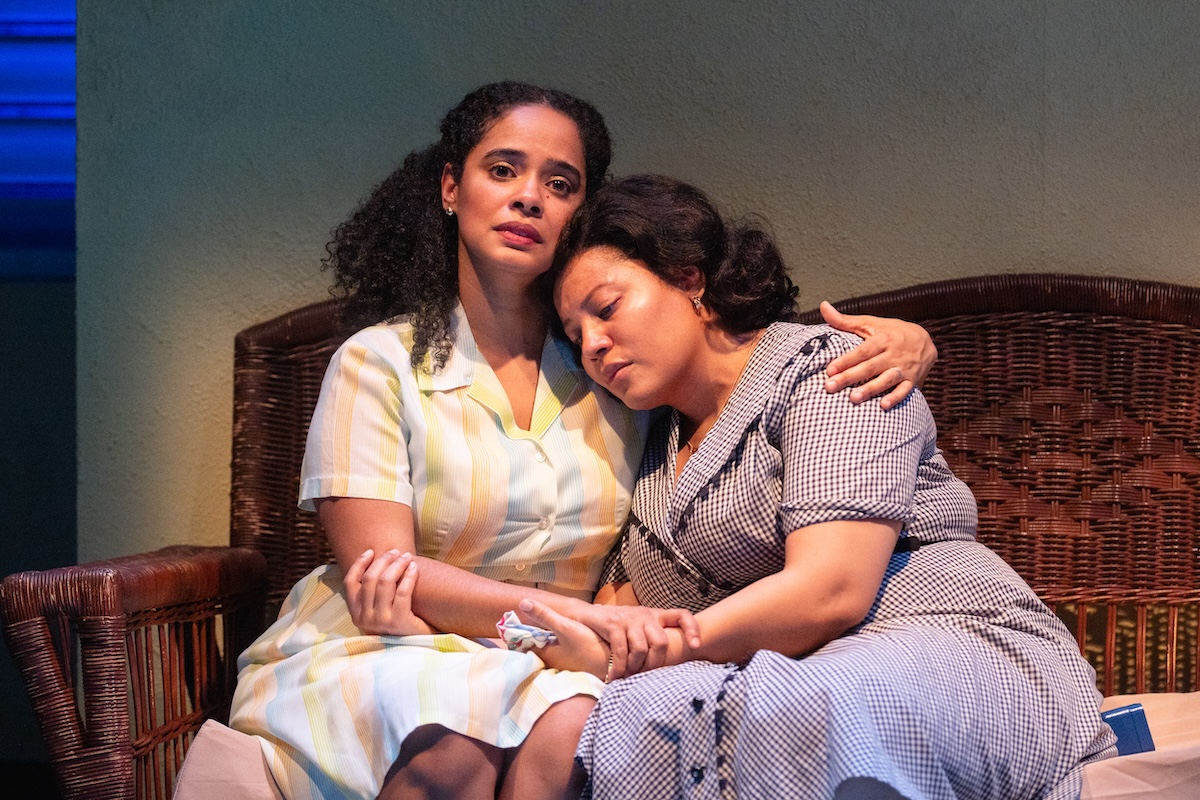The Tooth of Crime

(© Mark Roussel)
To launch her 45th LaMaMa Experimental Theatre Club anniversary year, Ellen Stewart decided to revive Sam Shepard’s celebrated rock ‘n’ roll play The Tooth of Crime, which was a huge hit with critics and La MaMa audiences alike back in 1983. So she rounded up actors Ray Wise and Raul Aranus from the original cast — along with director George Ferencz, set designer Bill Stabile and costume designer Sally Lesser — and got going once again. Indeed, Stewart has said the production is being done “exactly, exactly, exactly the way we did it in 1983.”
What she didn’t say is that this is no longer the standard version of Shepard’s script, which he first wrote in 1972. For the 1983 production, he allowed Ferencz to stage the play in concert form. Three years later, Shepard rewrote the script and discarded the music he had written — replacing it with new songs by T-Bone Burnett — and renamed the play Tooth of Crime (Second Dance. Shepard is allowing this duplication of the earlier incarnation solely for old time’s sake and isn’t going to authorize this version again. That’s a wise decision, because this version of The Tooth of Crime is toothless. (Perhaps it always was, but I didn’t see the original production.)
As the play begins, Hoss (Ray Wise) is discovered sitting enigmatically on a black-leather divan, worrying that his preeminent power as a Las Vegas entertainer with crime-boss-like characteristics is threatened by upstarts. Having consulted moll Becky Lou (Jenne Vath), astrologer Galactic Jack (Gideon Charles Davis), and physician/hypodermic wielder Don (Raul Aranus) to little avail in Act One, Hoss meets menacing interloper Crow (Nick Denning) at the top of the second act. They engage in a rap challenge that doesn’t go well for him and leads to dire developments. But not before Becky Lou appears in school-girl outfit and graphically recalls being raped from behind by someone who might have been the school-boy Hoss. (Don’t quiz me on that one.)
When the show was first seen about 25 years ago, a hullabaloo went up about it, with one prominent critic calling it the best play written in a decade. But I’m stretching my imagination to the not-quite breaking point to see its appeal. Perhaps the 1980s crowd was excessively dazzled because Shepard had laced the play with mythic intimations familiar to his oeuvre and, by punning on rock music’s indisputable thrall, had also hinted heavily that here was a timely allegory about power. In its generic way, The Tooth of Crime could be taken as commentary on many governments presided over by uncertain elected officials, although it wouldn’t have seemed appropriate criticism of Ronald Reagan’s White House in its initial years. Depicting Nancy Reagan as a gun moll is, of course, an amusing thought — and we know she relied on an astrologer.
Regardless, with the play’s brash and potential fresh qualities having worn away, Ferencz is faced with turning the lurid yet desultory script into something that has sizzle. There still is something exhilarating about keeping the actors on a stage raised high over the band. And the musicians do send sparks flying. (Original members Tass Filipos, Jeff LaMarre Denny McCormick and musical director Bob Jewett are present with new-comers Marc Jaffee and Kevin Joy.) Moreover, lighting designer Jeff Tapper switches adroitly to rock concert effects when the performers step to the standing mikes at the footlights.
The acting is something else again. The no-contest stand-out is Nick Denning as the sinister Crow, who when first seen-is perched like a bird on the tufted black divan. He’s layered the right side of his face with a purple birthmark, making him simultaneously frightening and strangely beautiful. He speaks in a crow-like squawk and often uses his arms as wings. It’s a play-saving turn. While the rest of the cast ranges from more than okay to adequate, the disappointment is Ray Wise. He behaves as if worried he won’t be as arresting now as he was 23 years ago. As a consequence, he probably isn’t. Neither is The Tooth of Crime, no matter what the killer-diller enterprise may have been back in the day.












